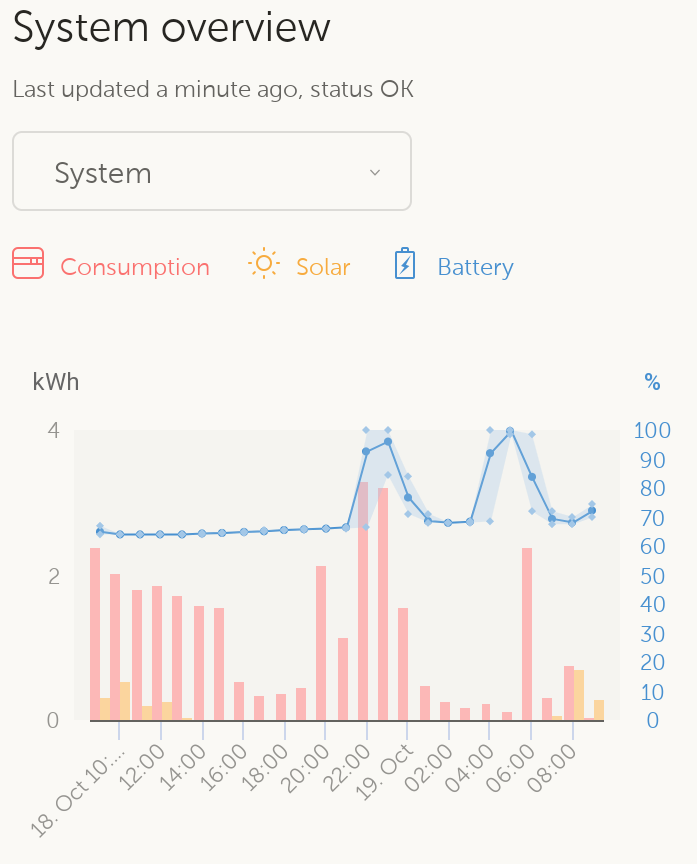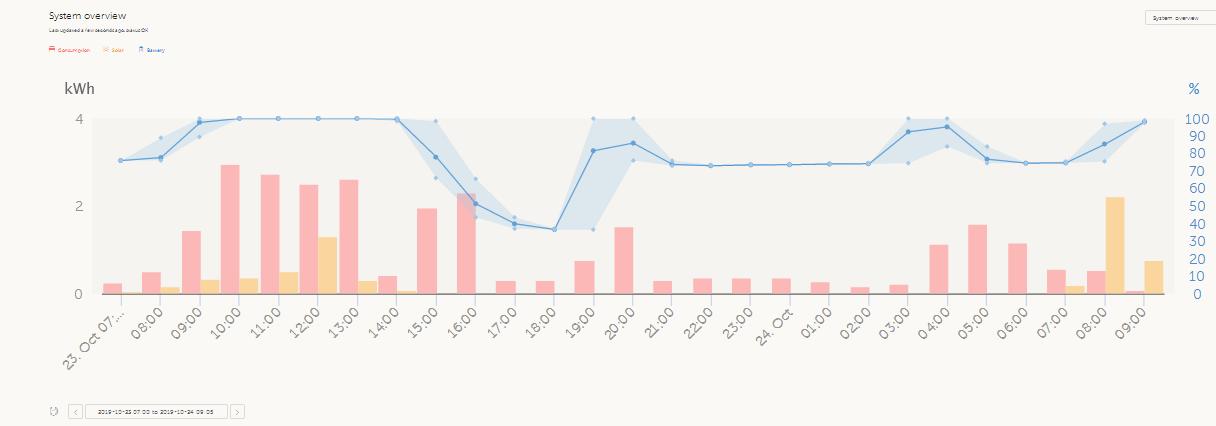The System 5.2Kw PV with a Fronius Primo 4-1 inverter interfacing with a Victron MultiPlus 48/5000/70-100 an a CCGX Gateway, 2 x Aquion S30-0080 48v batteries.
I'm new at this. The batteries have only been up and running for 2 months so I'm learning about them every day. I'm trying to get the most out of them, that is charging to 100 % and discharging to near zero every day. However the Victron unit is, I'm sure, preventing this as It's not designed to work with sodium batteries.
My problem is that unless the batteries have a 100% SOC for at least an hour during the day they will only discharge to a relatively high percentage SOC.
In the summer where the batteries have a 100% SOC every day the batteries will discharge to about 11%. ( I was hoping for lower)
At this time of year I'm rarely getting a 100% SOC via Solar and so have to use scheduled charging. However as soon as the charging is finished the discharging starts . But only to about 60-70%.
I'm beginning to think that there is a battery life protection built in to the Victron unit even though it is disabled in the CCGX.
My options/questions:
How do I enable scheduled charging and get the SOC to remail at 100% for at least an hour?
Is there a battery life protection built in within Victron?
Can I turn off battery life protection within the Victron?
As you can see in the first image, as soon as the SOC is 100% for about an hour (10-1100 )the battery will discharge more, down to about 40%. the other attachments show what happens if I can't get that magic hour of 100% the discharge is between 60 to 70%.
If the battery doesn't achieve 100% SOC the I'm left with about 80% SOC
I am planning in the winter to charge the batteries with cheap grid electricity at night, but if I cannot get the !00% SOC to last for more than a few minutes the batteries will never discharge fully, which is one of the reasons I chose the sodium batery.
Any advice gratefully received.
Thanks,
Chris



 screenshot-20191020-194346.png(61.5 KiB)
screenshot-20191020-194346.png(61.5 KiB)


